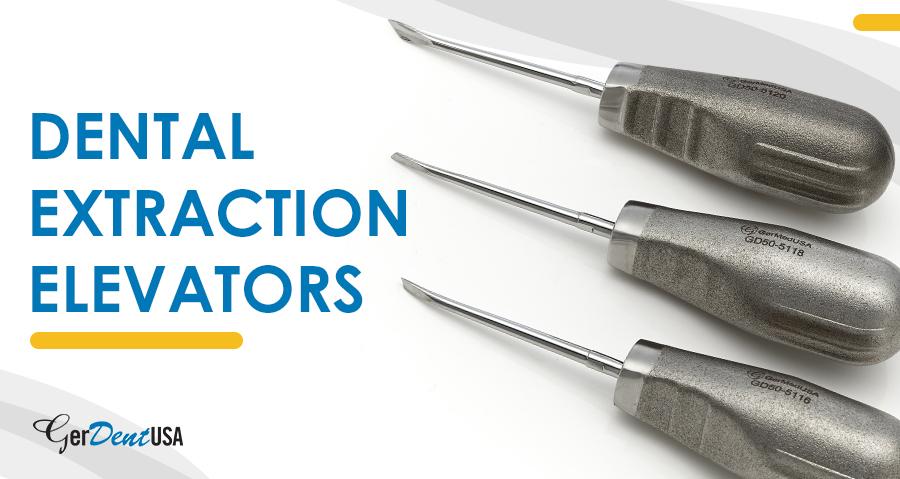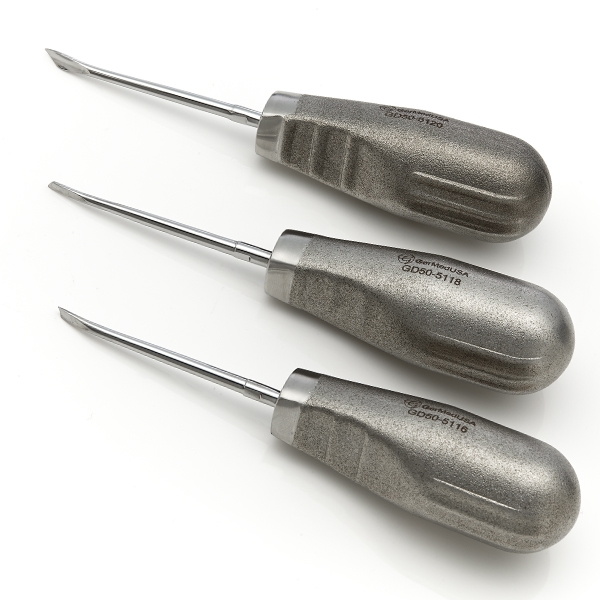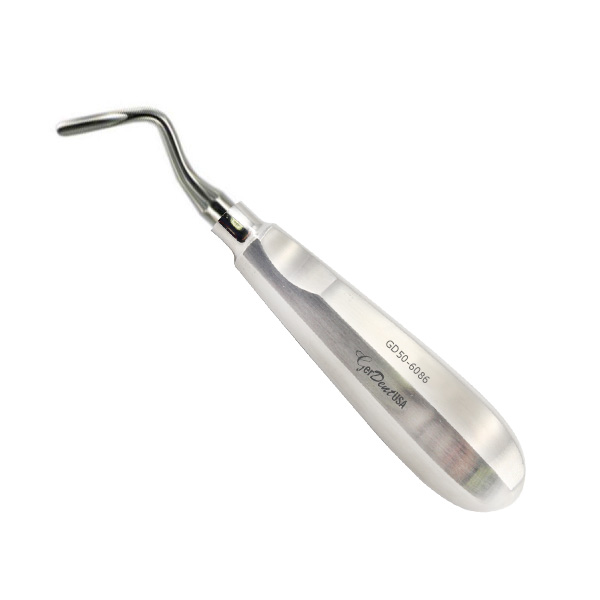Extraction of teeth is a complex procedure that requires relevant skills and expertise. Other than that, having dependable skills always speeds the procedure up. Other than that, it aids the clinician in performing a clean procedure that even speeds up post-operative healing time. Dental extraction elevators are part of such an armamentarium.
These dentistry instruments aid the operator in luxating the teeth prior to the application of forceps. Extraction elevators are sharp, efficient, versatile, and durable.
Indications for Elevator Use:
Elevators luxate the teeth before application of Extraction forceps during teeth removal. These instruments aid in removing the teeth that cannot be grasped by extraction forceps.
Some examples include Malposed teeth, Impacted, fragile teeth, and teeth with cervical caries. Another indication for their use is when the initial application of forceps is complex or causes trauma. Extraction elevators also remove roots that are broken down at the time of extraction. These instruments also use to remove the roots buried in the bone or are broken down.
Some Things to be Careful About While Using the Elevators:
Because the Elevators are handheld instruments and require some force for effective functioning, these dental instruments may cause considerable trauma to the adjacent teeth if not used carefully. These instruments in dentistry may cause loosening or extraction of adjacent teeth. Other than that, there is a risk of fracturing the mandible, maxilla, and maxillary tuberosities.
Another risk while using the dental extraction elevator is that the teeth may be forced into nearby vital structures such as the Maxillary sinus and tissue spaces. Slippage of elevators may also lead to tissue injury to the lingual nerve, oral mucosa, tongue, soft palate, the floor of the mouth, pharynx, and tonsils.
Classification of the Elevators:
Classification of elevators is done according to their use. Some elevators are designed to luxate or remove the entire tooth. Some elevators remove the roots broken off at the gingival line, and elevators are specially designed to remove apical thirds of the root/ root tip elevators. Also, dental extraction elevators are designed to cut bone or remove teeth, and finally, periosteal elevators are used at the beginning of the extraction procedure.
Elevators are classified into three types according to their blade type. These are straight bladed elevators (straight type), triangular (Cryer elevator), and Pick type (Apical elevator)
Some Rules to Follow While Using the Elevators:
Make the interdental bone the fulcrum while extracting teeth. The buccal plate, lingual plate, or the adjacent tooth should never be used as a fulcrum unless it is to be extracted as well. Buccal and lingual plates are thin and may fracture under pressure. Elevation of the tooth is done from the mesial side, so the interdental bone is the fulcrum.
There is a risk of damage to adjacent soft tissues; hence finger guards are essential inside the mouth to prevent injury. The flat surface of the blade of the instrument should face the tooth being luxated. All force application should be in the direction of extraction. Even while using the interdental bone as the fulcrum, ensure that the adjacent tooth or root is unengaged and undamaged.
Principles of Using the Elevators:
There are three principles of using elevators. These are the Lever principle, wheel & axle principle, and Wedge principle. The lever principle is most commonly used; the handle of the dental root elevator is the effort arm, while the blade is the working end that applies the load to the tooth.
The wedge expands; it splits and displaces the object receiving the force. The wedge principle has two movable inclined planes, with a base on one end and a blade on the other end. The elevator is pushed between the bone and the tooth, acting as the wedge. Force is applied to the base, which turns the resistance into force on the opposite side.
The wedge principle comes in use to luxate the teeth or root out of its socket. The lever principle is used to displace it out of the socket, where the elevator is wedged between the tooth and bone. When the elevator is wedged between the tooth and alveolar bone, it tears away the periodontal ligaments to mobilize the tooth.
The wheel and axle principle is the most aggressive one and is the least used. Force application is on the wheel that, in turn, turns the axle to raise the weight of the tooth. If this principle is used improperly, there is a risk of fracturing the mandible.




